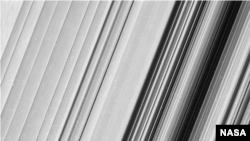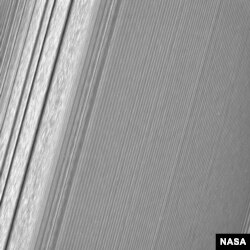New images of Saturn’s rings reveal the greatest detail yet of the planet’s signature trait, including what NASA calls “moonlets” embedded in them.
The images were taken by NASA’s Cassini probe, which is in the final stages of its mission that includes “20 orbits that dive past the outer edge of the main ring system” before the spacecraft plunges into the planet itself.
"These close views represent the opening of an entirely new window onto Saturn’s rings, and over the next few months we look forward to even more exciting data as we train our cameras on other parts of the rings closer to the planet," said Matthew Tiscareno, a Cassini scientist who studies Saturn's rings at the SETI Institute in Mountain View, California.
The images are the closest ever taken of Saturn’s rings and, according to NASA “resolve details as small as 550 meters, which is on the scale of Earth's tallest buildings.”
The “ring-grazing” orbits began last November and will continue until the end of April, and in addition to spotting the moonlets, they have given greater clarity to other structures within the rings such as the so-called propeller-like formations.
NASA added that Cassini has also provided the “closest-ever” glimpses of two small moons, Daphnis and Pandora.
Cassini was launched in 1997 and arrived at Saturn in 2004. Since then, the probe has provided closeup looks at the planet’s rings and moons as well as data about Saturn’s magnetic field. Some of the highlights include finding a possible global ocean on the moon Enceladus as well as methane seas on the moon Titan.









